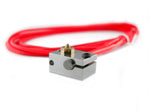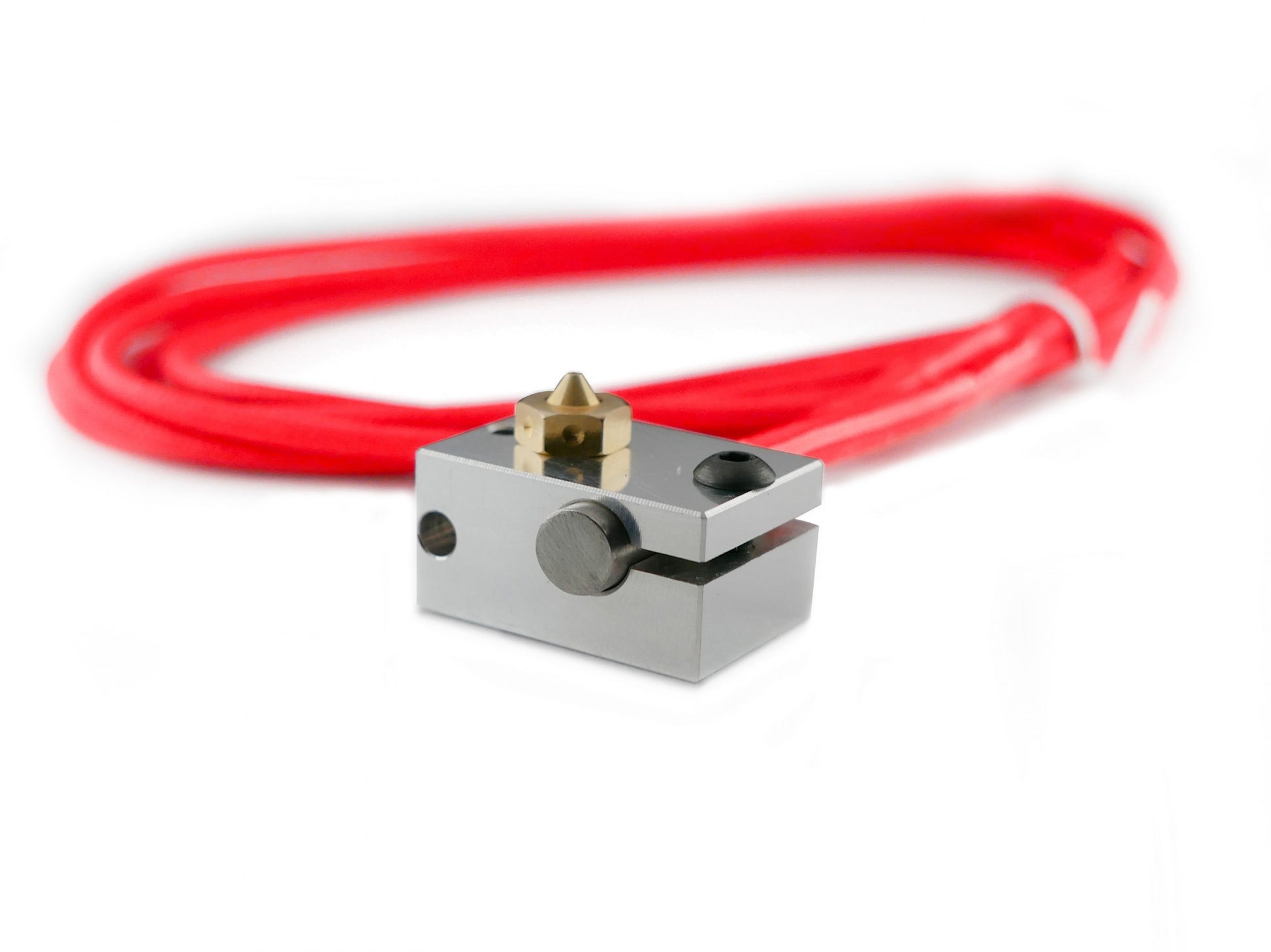
E3D successful range of high quality ceramic heaters. Please note, this is for 24V power supplies!
What is a heater cartridge?
A heater cartridge ensures the conversion from solid to liquid in the 3D printer extruder. The heater cartridge is built into the heater block, which otherwise consists of a thermistor cartridge, a heat break and a 3D printer nozzle. The materials in this 3D printer extruder still differ from each other. For example, the 3D printer nozzle is often made of brass, to conduct the heat as well as possible, and the heater block is made of aluminum. The heat break, on the other hand, is made of a poorly conductive material, such as titanium or another type. Finally, the thermistor cartridge measures the temperature in the block and the heater cartridge generates heat. These are often available in 12V or 24V, depending on configuration.
3D printer extruder
A 3D printer actually consists of two major components, namely your cold end and your hot end. You guessed it, in the first part the 3D printer filament will be cold processed, after which it will be melted in the hot-end part. A 3D printer extruder is therefore the means to completely process the filament.
Many different 3D printer extruders have been released over the years, which can be divided into two large groups, namely direct-drive 3D printer extruders and bowden-tube 3D printer extruders . What's the big difference? The direct-drive 3D printer extruder brings the filament directly into the hot-end, where the motor is placed directly on it. With a Bowden-tube 3D printer extruder it is mounted remotely. Both processing systems work with a heater cartridge, a heater block, a 3D printer nozzle and a thermistor cartridge.
Types of 3D printer extruder
There are a number of systems in the world of 3D printing that can process 3D printer filament.
E3D V6 hot end
The most used and best-selling 3D printer extruder on the market. This all-metal extruder has been featured on 3D printers in many shapes and sizes for years. The choice can be made between 12V and 24V, but also between the filament sizes that are processed, namely 1.75 mm or 3.00 mm.
Bondtech extruder
Bondtech has become increasingly popular among 3D printers in recent years. This is due to the revolutionary design in which the 3D printer filament is gripped from two sides. This ensures that filament slips less often, the flexible filament can be easily processed and it is not dependent on the fine adjustments required by other processors.
Zesty Nimble extruder
The Zesty Nimble extruder is the result of frustration with other 3D printer extruders. The Zesty Nimble brings the best of both worlds together, by keeping the extruder very light and the motor separate from the hot end, offering the accuracy of a direct-drive system but the weight savings of the bowden-drive 3D printer extruder .
3D printer extruder parts
The aforementioned E3D thermistor cartridge is mounted in the hot end section. In the hot-end part of the 3D printer extruder, the transition from solid to liquid will take place, which sounds simple. However, there are still a few steps before the perfect layer is deposited by the 3D printer. The 3D printer filament will first be guided through the supply to a heatsink to keep it cool, then through the heat break after which it ends in the heater block, where the transition takes place. There are a number of crucial requirements for the components for everything to work properly.
First of all, the heat break, the connection between the cold part and the hot part in a 3D printer extruder. This heat break is often made of a material that does not or hardly conducts heat, such as titanium. The goal is to achieve separation and ensure that no heat flows back into the heatsink, also known as heat creep. To prevent this, a fan is often placed on the heatsink and the conversion will only take place in the heater block.
The heater block is often made of a well-conductive material, such as aluminum. This aluminum part allows for the mounting of the heat break on the one hand and the 3D printer nozzle on the other, which must fit together perfectly to prevent leaks.
Ultimately, the thermistor and heater cartridge will also be installed in this heater block. The first mentioned measures the temperature through the resistance and the other creates heat through a resistance that heats the heater block and therefore also the nozzle to the desired temperature.
The last component in the hot-end is the 3D printer nozzle. This brings the molten filament outwards through an opening of 0.4 mm, usually onto the printing surface. E3D nozzles are leading in the market, due to their favorable cost price and high manufacturing quality.

